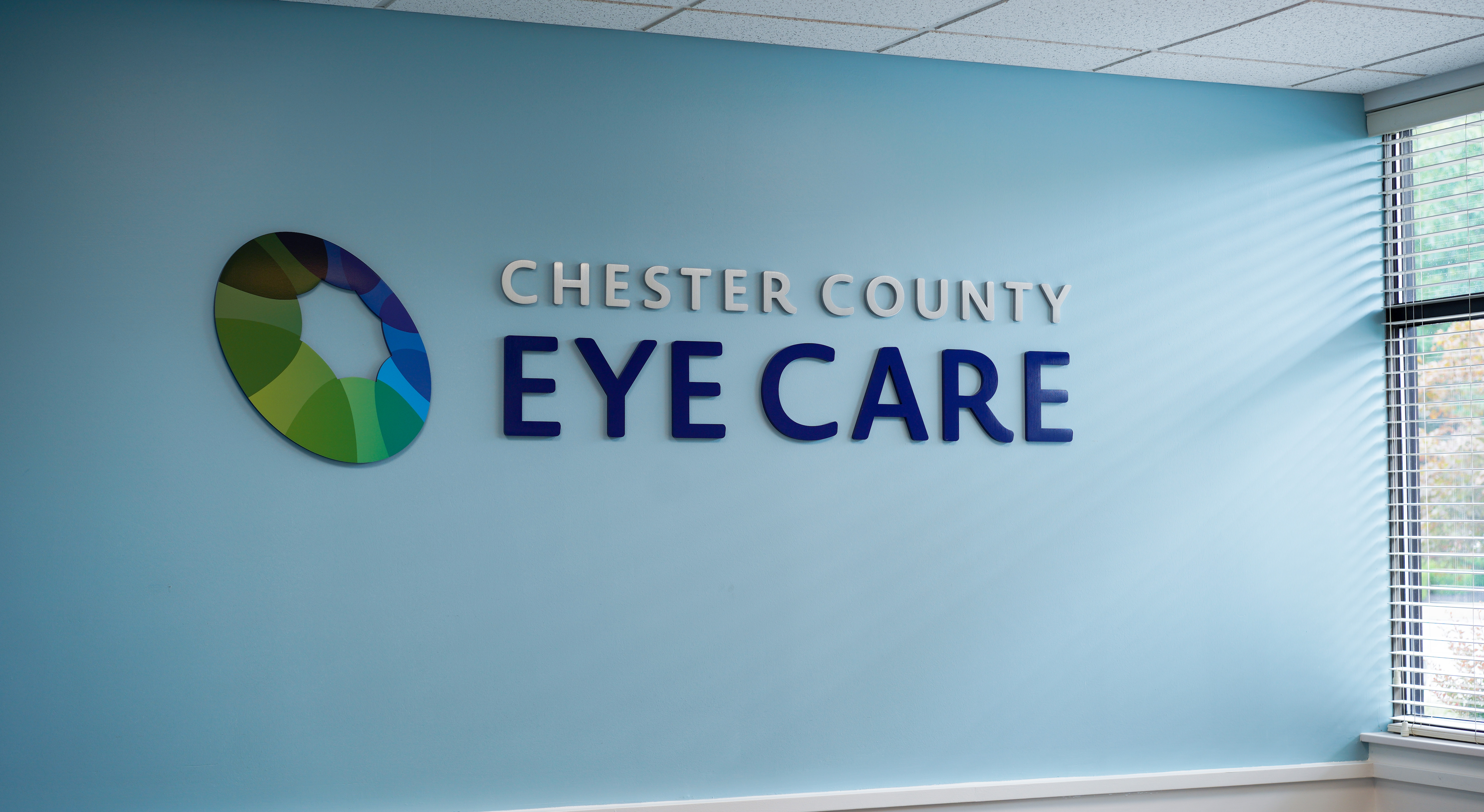A Guide to Cataract Surgery Lenses
By John DeStafeno, MD

A close up of an intraocular lens
Overview of Cataract Surgery
Cataract surgery is one of the most common surgeries performed in the world, with over 26 million done annually. Cataracts, characterized by the clouding of the natural lens, typically develop with age. Additionally, medical conditions and certain medication usage can also lead to cataract formation. During surgery, the cataract is completely removed and an intraocular lens (IOL), often made of acrylic material, is inserted in its place. Every individual requires an intraocular lens to focus their vision.
The evolution of technology, such as advanced lasers, computer-guided imaging, and innovative intraocular lenses, has enabled patients to achieve better vision than ever. While these advancements contribute to outstanding outcomes, they have also led patients to face more complex decisions for surgery–especially concerning IOL’s.
At Chester County Eye Care, our goal for patients is to ensure they feel comfortable with the procedure and are educated on all the options that are available to refine their vision today. There is a large amount of information to digest when planning cataract surgery, so even with the best tools, discussions, and examples, it is perfectly normal for patients to feel stressed when deciding their procedure and lens options. A successful cataract surgery revolves around a safe, low-risk procedure that delivers the patient’s expected vision. Since each individual is unique, a customized plan is made to meet the specific needs of the patient.
How Do You Decide What Lens to Use for Surgery?
The first step in determining the best lens option for a patient is a detailed preoperative exam and discussion. In addition to getting measurements of your eye, it is essential for our surgeons to understand what the patient’s goal for their vision is. The process is a team effort between the surgeon and the patient. A key part of this collaboration comes from the surgeon listening to your own preferences so a clear goal can be set. In order to get you closer to choosing what lens you want, we will always ask what activities you use glasses and contacts for, and how often. For instance, some patients use corrective lenses for all tasks, while others may use them exclusively for either far or near vision. Furthermore, some patients may use corrective lenses but desire to be less dependent on them for certain tasks. Gathering this information is crucial for your surgeon, as it will be used to collectively decide on the lens that best matches your vision goals.

A patient getting their eyes measured with an IOLMaster™
Types of Intraocular Lenses
With the significant advancements in intraocular lenses today, they can now correct nearsightedness, farsightedness, astigmatism, or a combination of all three. Lenses are primarily available in two categories: monofocal and multifocal. Monofocal lenses (mono meaning one) provide a single focal point that we set. This means that they can help you see at either near (books), far (driving), or intermediate (computer) vision. Keep in mind that this only corrects one of those options, so glasses will still be needed to compensate for vision at the points that are not corrected. On the other hand, the second category of lenses are able to extend the range of vision and add more focal points to your vision, thus reducing your dependency on corrective lenses. This option, aptly named multifocal, has more than one focusing zone and can allow for improved computer vision and smaller print vision in books.
In addition, there are special circumstances that require specific lenses for optimal vision. Astigmatism, or the uneven shape of the eye, can be corrected with a toric lens, which is available in both monofocal and multifocal options. For patients who have undergone prior eye surgery (e.g., LASIK), and where accuracy is crucial, there are light-adjustable lenses. These lenses can be fine-tuned after cataract surgery, enabling patients to “test-drive” their vision before finalizing the focus.

Monofocal left, multifocal right. Notice the increased range of vision with the multifocal lens.
Wrap Up
Overall, innovation in the field has made it possible to not only remove a cataract, but also provide exceptional vision for countless patients. Becoming less dependent on corrective lenses can be very exciting, so it is wonderful that we have so many options now to provide a fuller range of vision. When making decisions related to cataract surgery, it is important to leverage all available information to ensure you choose the lens that best suits your needs.
We would love to assist you on your journey to achieve your ideal vision and make you feel comfortable with your eyesight. If you would like to learn more or schedule an appointment with us, please call 610-696-1230 or click here to learn more about cataract surgery and request an evaluation.

.avif)

.avif)
.avif)
.avif)
.avif)
.avif)
.jpg)


%20(1080%20x%201080%20px)%20(3).png)